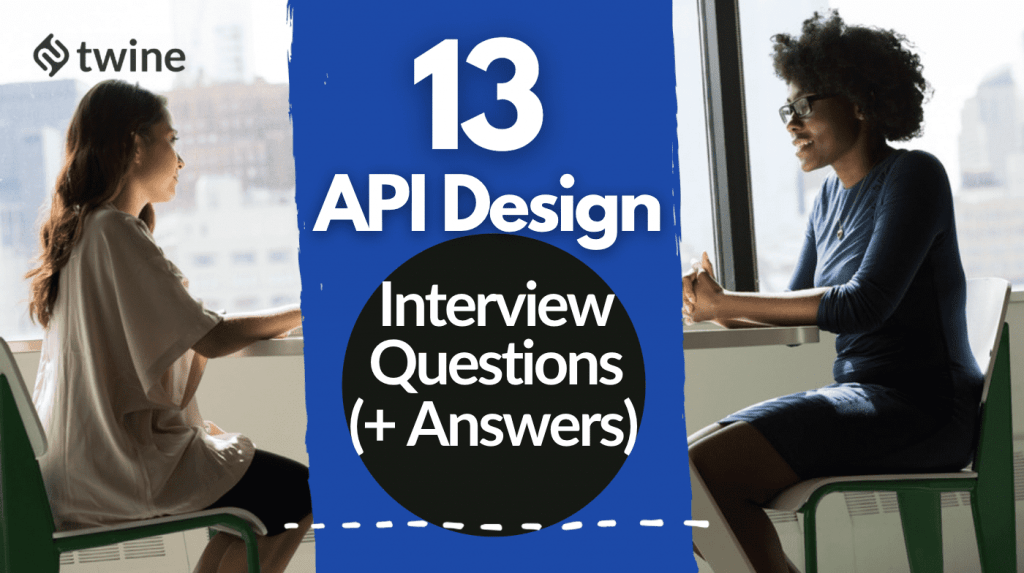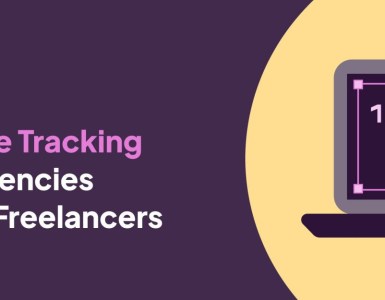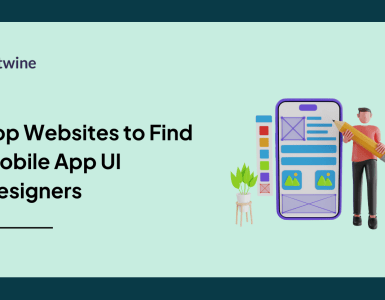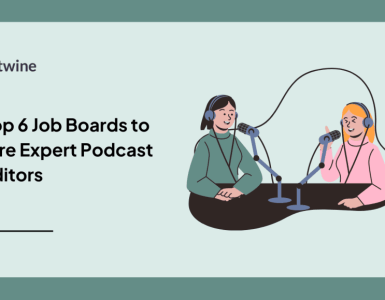
When applying for an API design job, you have to demonstrate that you have extensive knowledge of API Design – because API design interview questions are no joke.
If you’re someone who usually sails through their job interviews without a care in the world or a single nervous twitch, then be prepared to have all that change. Tech and development interviews, as Software Engineer, Udayan Banerji learned, take a lot of grit and even more preparation.
It is essential to prepare answers, do some extensive research into the role and company, and even learn a few interview tips ahead of time – so you’re able to present yourself, along with your skills and knowledge, correctly.
Take notes! This article will cover some of the more common API Design interview questions, paired with some top-notch answers.
Note: If you’re looking for web development assistance with your project, Twine has over 10,500 web developers ready to hire…

Question 1: What is API Design?
API Design is defining interfaces/contracts for interacting between systems (server-to-server or server-to-client).
The core API design has an impact on how efficiently users can consume it as well as the overall user experience. Therefore, this process of development does not allow a single approach. Instead, it integrates a set of guidelines to match initial expectations and keep working consistently.
APIs are critical for modern businesses, as they provide new capabilities to anything from operations and products to partnership strategies.
Question 2: What is the architectural style for developing web API?
The architectural styles for developing web API are:
- HTTP for client-server communication.
- For a formatting language, you use XML/JSON.
- The address for the services is a simple URI.
- Stateless communication.
Question 3: In REST, what is a URI?
Each resource in the REST is identified by a URI (Uniform Resource Identifier). To access the resource, the client application uses an HTTP operation.
| //FORMAT for creating a URI <protocol>://<service-name>/<ResourceType>/<ResourceID> |
Question 4: What is a cached response?
Caching is the capability to keep copies of frequently accessed data in multiple locations along the request-response chain. When a user requests a resource representation, the request is routed through a cache (local cache, proxy cache, or reverse proxy) to the service that hosts the resource.
If any of the caches along the request path have a fresh copy of the required representation, that copy is used to fulfill the request. If none of the caches can satisfy the request, it is forwarded to the service (or origin server as formally known).
Question 5: What are some types of Web Services?
There are two types of web services:
- SOAP Web Services: It runs on the SOAP protocol and sends data using XML technology.
- Restful Web Services: It’s an architectural style that almost always uses the HTTP/HTTPS protocol. REST is a stateless, client-server architecture in which web services are resources and can be recognized by their URIs. Client applications can use HTTP GET/POST techniques to request Restful web services.
Question 6: What are the key components of an HTTP Request?
An HTTP Request has five key components:
- Verb: Indicate HTTP methods like GET, POST, DELETE, PUT, and more.
- URI: Uniform Resource Identifier (URI) to recognize the resource on the server.
- HTTP Version: Indicate the HTTP version, like HTTP v1.1.
- Request Header: As key-value pairs, it contains metadata for the HTTP Request message. Such as client (or browser) type, format supported by the client, message content format, cache settings, and so on.
- Request Body: Message’s content or the representation of a resource.
Question 7: What should be used to filter collected resources?
It is recommended that query parameters be used to filter resources. Rather than exposing filter functionality as a separate resource, e.g. /users/filter-by-country, use query parameters, for example: /users?country=us.
Question 8: Name a few types of APIs.
APIs (application programming interfaces) come in various forms. When developing a new API, API designers can select from a range of protocols and standards, regardless of the type of API and its purpose. Some kinds of APIs that you can find nowadays are:
- Open APIs: Known as external or public APIs, they are accessible to developers and other users with minimal limitations. They can require registration and the usage of an API key, or they can be totally open. They are created to allow external users to get access to data or services.
- Internal APIs: Internal APIs, in contrast to open APIs, are intended to be concealed from external users. They are used to exchange resources within an organization. They allow multiple teams or departments within a company to use each other’s tools, data, and programs.
- Partner APIs: Partner APIs are technically identical to open APIs, but they have restricted access, often regulated by a third-party API gateway. They are usually intended to serve a specific purpose, such as giving access to a paid-for service.
- SERP API: SERP refers to the pages returned by a search engine after entering a keyword into the search bar. These APIs enable you to evaluate, analyze, track, and optimize the visibility of your website.
Question 9: What are the differences between APIs and Web Services?
Web services and APIs are frequently mistaken for each other, which is not unusual considering their similar ground. However, a few main differences are:
- API is an essential part of web services that provides an interface for communication. In contrast, a web service is an application that provides any kind of service through the Internet.
- API can be exposed by your application or through web servers like IIS, Apache, Nginx, etc.
Question 10: What is a RESTful API?
A RESTful API is an application program interface (API) based on REST, an architectural model for creating web services. REST uses standard HTTP methods to create, read, update, and delete resources.
Question 11: What is the main difference between POST, PUT and PATCH?
POST: Forms a new resource. It is not idempotent, implying that many invocations with the same request body will create numerous new resources with unique identifiers.
PUT: Replaces or updates an existing resource. It is idempotent, which means that many invocations with the same request body have the same impact as a single invocation: the resource will be changed afterward.
PATCH: It does the same that PUT does, but it can be used to change not a complete resource but some parts of it (for example, some fields).
Question 12: Define SOA.
A Service-Oriented Architecture (SOA) is an architectural pattern that consists of services. Here, application components use a network communication protocol to deliver services to other components. This communication includes the exchange of data or some kind of coordinating action between services.
Question 13: What are the benefits of REST web services?
Some of the strong points of REST web services include:
- The learning curve is simple because it works on the HTTP protocol.
- It supports various technologies for data transfer such as text, XML, JSON, image and others.
- REST is a lightweight standard for HTTP protocol.
- Because there is no contract between the server and the client, the implementation is loosely coupled.
Conclusion

Almost every developer job interview, whether for a freelance job or a full-time job, most likely will include questions about effective API design. However, when designing APIs for actual use cases, it’s critical to understand the fundamental concepts of APIs and how to apply them.
In terms of the number of questions and areas covered, API design interview questions for developers are nearly endless. Although the above answers may or may not be used in your online interview, we hope that they provide you with a good understanding of API design and prepare you for future API jobs and projects.
If you’re a business looking for good developers, you probably know that professionals are in high demand, and hiring firms are competing intensely. However, it should not be hard if you know where to search for them. Platforms such as Twine help you to avoid an endless search – you can hire the best freelancers for many disciplines including Laravel Developers, and Software Engineers working with AWS.
We hope this article helped you prepare for your API design interview – now go out there and impress some clients!
Ready to get hired? At Twine, we have dozens of top-quality jobs being posted each and every day. From design to marketing, development to copywriting – there’s a job ready for your skills. Join the marketplace of creative talent here.



